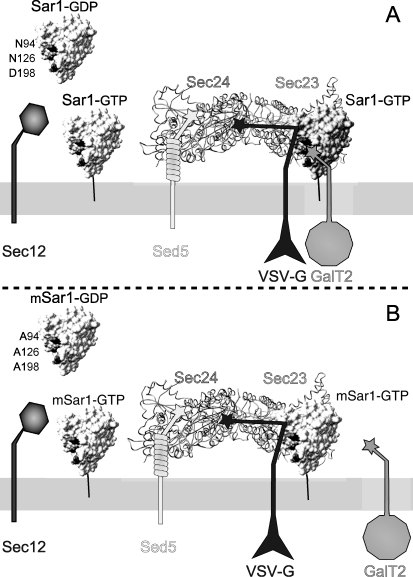FIGURE 7.
Schematic representation of recruitment of membrane cargos by the ternary prebudding complex Sar1-Sec23-Sec24 (adapted from Ref. 15). A, cytosolic Sar1 converted to membrane-bound Sar1 by the GEF activity of Sec12 recruits the Sec23-Sec24 heterodimer. The external layer (not shown in the scheme) is completed with the binding of the heterotetrameric complex Sec13-Sec31 (15). Cargo proteins are recruited as the prebudding complex is being formed. Membrane proteins with long CTs, like Bet1 or Sed5 (27, 28), bind Sec24 through their respective LXXLE and YNNSNPF motifs (stars); VSV-G also binds Sec 24 through the DXE signal in a Sar1-dependent manner (14, 32), whereas membrane cargos with short CTs, like GalT2 and other glycosyltransferases, are recruited by direct interaction with Sar1 through the (R/K)X(R/K) motif. B, the prebudding complex formed with Sar1 with amino acids in site A replaced by alanines (mSar1) is still able to recruit VSV-G but has a reduced ability to bind the CT of GalT2 and consequently to load it in COPII vesicles, resulting in defective ER exit and in a steady state balance of ER-Golgi distribution favoring the ER.

